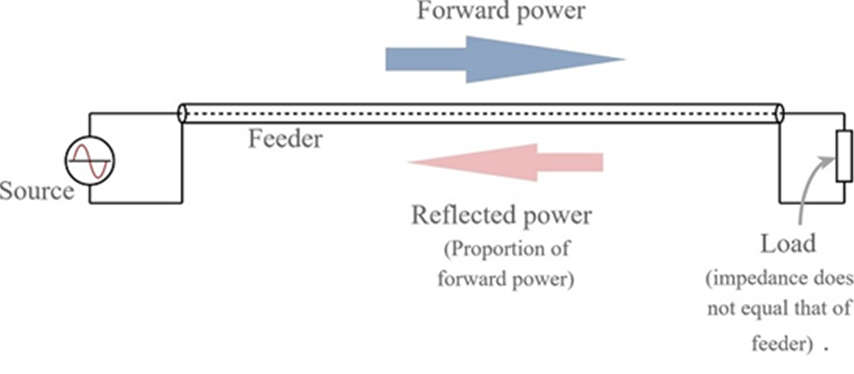- Voltage standing wave ratio (VSWR) is defined as the ratio between transmitted and reflected voltage standing waves in a radio frequency (RF) electrical transmission system.
- It is a measure of how efficiently RF power is transmitted from the power source, through a transmission line, and into the load.

- A common example is a power amplifier connected to an antenna through a transmission line.
- SWR is the ratio between transmitted and reflected waves.
- A high SWR indicates poor transmission-line efficiency and reflected energy, which can damage the transmitter and decrease transmitter efficiency.
- Since SWR commonly refers to the voltage ratio, it is usually known as the voltage standing wave ratio (VSWR).
![]()
The Standing Wave
- A standing wave, also called a stationary wave, combination of two waves moving in opposite directions, each having the same amplitude and frequency.
- The phenomenon is the result of interference; that is, when waves are superimposed, their energies are either added together or canceled out.
Mathematically
- VSWR is the voltage ratio of the signal on the transmission line:
VSWR = |V(max)| / |V(min)| - where V(max) is the maximum voltage of the signal along the line, and V(min) is the minimum voltage along the line.
It can also be derived from the impedances:
![]()
- VSWR = (1+gamma)/(1-gamma)
where gamma (gamma) is the voltage reflection coefficient near the load, derived from the load impedance (ZL) and the source impedance (Zo):
gamma = (ZL-Zo)/(ZL+Zo)
If the load and transmission line is matched, gamma = 0, and VSWR = 1.0
